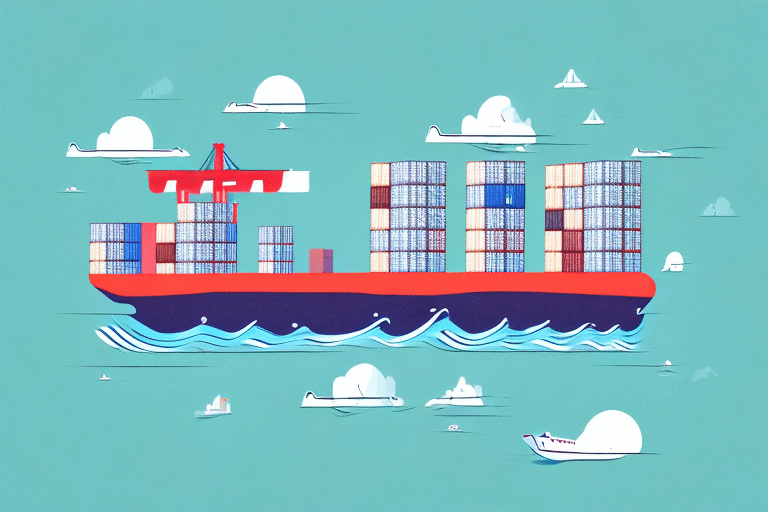A Complete Guide to Importing Products from China
China has solidified its position as a leading hub for manufacturing and exporting a vast array of goods. Whether you're managing a small startup or a large corporation, importing products from China can significantly reduce costs and expand your product offerings. This comprehensive guide delves into the benefits and risks of importing from China, strategies for finding reliable suppliers, effective negotiation tactics, shipping and logistics considerations, and more. Let’s explore how to navigate the complexities of international trade with China to drive your business success.
The Benefits of Importing Products from China
Importing from China presents numerous advantages that can enhance your business operations and profitability:
- Cost Efficiency: China is renowned for its low manufacturing and labor costs, enabling businesses to procure products at competitive prices. This cost advantage allows for higher profit margins or more competitive pricing in your market.
- Diverse Product Selection: The vast number of manufacturers in China offers an extensive range of products and variations, providing businesses with ample choices to meet diverse customer needs.
- Customization and Innovation: Many Chinese suppliers are open to customizing products, allowing businesses to differentiate their offerings and cater to specific market demands.
- Scalability: China's robust manufacturing infrastructure can accommodate both small and large order volumes, supporting business growth and scalability.
- Access to Advanced Manufacturing: China invests heavily in manufacturing technologies, ensuring high-quality production and the ability to handle complex manufacturing processes.
- Sustainable Practices: Increasingly, Chinese manufacturers are adopting sustainable production methods, aiding businesses in meeting their environmental and corporate social responsibility goals.
According to the World Bank, China's manufacturing sector accounts for a significant portion of its GDP, underpinning its capacity to serve as a reliable source for global imports.
Risks and Challenges of Importing from China
While importing from China offers substantial benefits, it also comes with inherent risks and challenges that businesses must navigate:
- Supplier Reliability: Not all Chinese suppliers are equally dependable. Issues such as delayed shipments, subpar product quality, or complete non-delivery can disrupt business operations.
- Quality Control: Variability in product quality requires businesses to implement rigorous quality assurance processes to ensure consistency and meet customer expectations.
- Cultural and Language Barriers: Differences in language and business practices can lead to misunderstandings and complicate negotiations and communications.
- Legal and Regulatory Compliance: Navigating China's legal landscape and adhering to international trade regulations is critical to avoid legal disputes and penalties.
- Intellectual Property Risks: Protecting intellectual property (IP) rights can be challenging, with the potential for IP infringement and counterfeit products.
- Economic and Political Factors: Fluctuations in China's economy or changes in trade policies can impact import costs and supply chain stability.
Understanding these risks is crucial. According to a report by UNCTAD, effective risk management strategies can mitigate many of these challenges, ensuring smoother import operations.
Finding and Negotiating with Reliable Suppliers
Identifying Potential Suppliers
Finding reliable suppliers is foundational to successful importing. Here are effective methods to identify potential partners:
- Trade Shows and Exhibitions: Attending events like the Canton Fair provides direct access to a wide range of suppliers and products.
- Online Marketplaces: Platforms such as Alibaba, Global Sources, and Made-in-China facilitate connections with numerous manufacturers and suppliers.
- Sourcing Agents: Engaging local sourcing agents can help identify trustworthy suppliers and manage negotiations and quality checks.
- Referrals and Networks: Leveraging business networks and seeking referrals from other importers can lead to reputable supplier recommendations.
Evaluating Supplier Reliability
Assessing a supplier's reliability involves several critical steps:
- Verification of Business Credentials: Ensure the supplier is legally registered and has the necessary certifications and licenses.
- Award and Recognition: Suppliers with industry awards or certifications often adhere to higher quality and ethical standards.
- Requesting References: Contacting existing clients can provide insights into the supplier’s reliability and product quality.
- Visiting the Factory: If feasible, visiting the supplier’s manufacturing facility can offer a firsthand assessment of their operations and quality control measures.
Effective Negotiation Tactics
Negotiating favorable terms is essential for maximizing profitability and ensuring smooth operations:
- Clear Communication: Clearly articulate your product specifications, quality standards, and delivery timelines to avoid misunderstandings.
- Bulk Purchasing: Leveraging bulk orders can result in significant discounts and better pricing terms.
- Payment Terms: Negotiate flexible payment terms, such as partial payments or escrow arrangements, to minimize financial risks.
- Building Relationships: Establishing a strong, trust-based relationship can lead to preferential treatment, priority production, and long-term partnerships.
Understanding and respecting cultural nuances can also enhance negotiation outcomes. Chinese business culture emphasizes relationship-building and mutual respect, which can lead to more successful negotiations.
Shipping, Logistics, and Customs Procedures
Choosing the Right Shipping Method
Selecting an appropriate shipping method is pivotal for cost management and timely delivery:
- Sea Freight: Ideal for bulk shipments due to its cost-effectiveness, though it has longer transit times.
- Air Freight: Suitable for smaller, time-sensitive shipments but comes at a higher cost.
- Rail and Road Transport: Offers a balance between cost and speed, especially for shipments to and from regions with robust land transportation networks.
Managing Logistics
Efficient logistics management ensures that products are transported smoothly from China to your destination:
- Freight Forwarders: Partnering with experienced freight forwarders can streamline the shipping process, handle documentation, and coordinate transportation logistics.
- Warehousing Solutions: Utilizing warehousing services can aid in inventory management and facilitate quicker distribution to end markets.
- Tracking and Visibility: Implementing tracking systems provides real-time visibility into shipment status, allowing for proactive management of potential delays.
Understanding Customs Procedures
Navigating customs procedures is essential to avoid delays and additional costs:
- Import Duties and Taxes: Familiarize yourself with the applicable tariffs, VAT, and other taxes imposed by your country on imported goods.
- Documentation: Ensure all necessary documents, such as commercial invoices, packing lists, and certificates of origin, are accurately prepared and submitted.
- Customs Brokers: Engaging a licensed customs broker can facilitate the clearance process and ensure compliance with local regulations.
Resources like the U.S. Customs and Border Protection provide detailed guidelines on import regulations and procedures.
Financial Considerations and Payment Methods
Calculating Import Costs and Profits
Accurately calculating all associated costs is crucial for determining profitability:
- Product Cost: Base price per unit as negotiated with the supplier.
- Shipping and Logistics: Expenses related to transportation, warehousing, and handling.
- Customs Duties and Taxes: Relevant tariffs and taxes based on product category and country regulations.
- Additional Fees: Costs for insurance, quality inspections, and miscellaneous fees.
Tools like the DHL Import Costs Calculator can assist in estimating these expenses.
Payment Methods
Choosing secure and efficient payment methods minimizes financial risks:
- Wire Transfers: Direct bank transfers offer security but require trust in the supplier.
- Letters of Credit (LC): Provide payment security for both parties, as funds are released only upon fulfillment of agreed terms.
- Escrow Services: Third-party services hold funds until both buyer and seller confirm satisfaction with the transaction.
- Online Payment Platforms: Services like PayPal offer convenience for smaller transactions but may have higher fees.
It's advisable to consult with financial advisors or banking institutions to select the most suitable payment method for your business needs.
Quality Control and Protecting Intellectual Property
Ensuring Product Quality
Maintaining high product quality is essential for customer satisfaction and brand reputation:
- Product Samples: Requesting samples before bulk orders allows for preliminary quality assessment.
- Pre-Shipment Inspections: Conducting inspections ensures that products meet specified standards before shipping.
- Quality Control Plans: Developing comprehensive quality control protocols with your supplier can prevent defects and inconsistencies.
Organizations like the ISO provide standards and guidelines for quality management systems.
Protecting Intellectual Property (IP)
Safeguarding your IP is critical to prevent unauthorized use and counterfeit products:
- Trademark and Patent Registration: Registering your trademarks and patents in China ensures legal protection against infringement.
- Non-Disclosure Agreements (NDAs): Implementing NDAs with suppliers can protect sensitive information and proprietary technologies.
- IP Audits: Regularly auditing suppliers for compliance with IP agreements helps in early detection of potential infringements.
The World Intellectual Property Organization (WIPO) offers resources and support for IP protection strategies.
Building Strong Business Relationships and Navigating Cultural Differences
Establishing Trust and Communication
Building robust relationships with Chinese suppliers fosters trust, reliability, and long-term collaboration:
- Regular Communication: Maintaining consistent and transparent communication helps in aligning expectations and resolving issues promptly.
- Visits and Face-to-Face Meetings: Periodic visits to suppliers’ facilities strengthen relationships and demonstrate commitment.
- Respect for Cultural Norms: Understanding and respecting Chinese business etiquette, such as gift-giving customs and hierarchical structures, enhances mutual respect.
Understanding Cultural Nuances
Cultural differences can impact business interactions and negotiations. Key considerations include:
- Building Guanxi: Guanxi, or personal connections, plays a vital role in Chinese business culture. Investing time in relationship-building can lead to more favorable business outcomes.
- Communication Styles: Chinese communication tends to be indirect. Reading between the lines and being sensitive to non-verbal cues can improve understanding.
- Negotiation Tactics: Patience and flexibility are valued. Avoiding confrontational approaches and seeking win-win solutions align with Chinese negotiation styles.
Resources like the Deep Language Blog offer insights into effective cross-cultural communication strategies.
Future Trends and Common Mistakes to Avoid
Emerging Trends in Importing from China
Staying abreast of evolving trends ensures that your import strategies remain competitive:
- Sustainable and Eco-Friendly Products: There is a growing demand for environmentally sustainable products, prompting manufacturers to adopt greener practices.
- Technological Integration: The use of automation, AI, and blockchain in supply chain management is enhancing efficiency and transparency.
- Shift Towards High-Quality Manufacturing: As Chinese manufacturers move up the value chain, there is an increased focus on quality and innovation.
- Increased Focus on E-Commerce: The rise of e-commerce platforms facilitates direct-to-consumer exports, expanding market reach.
According to Statista, China's e-commerce market continues to grow, presenting vast opportunities for importers.
Common Mistakes to Avoid
Avoiding common pitfalls can streamline your import processes and prevent financial losses:
- Lack of Due Diligence: Failing to thoroughly research and vet suppliers can lead to partnerships with unreliable or fraudulent entities.
- Poor Communication: Inadequate communication can result in misunderstandings regarding product specifications, delivery schedules, and quality standards.
- Underestimating Total Costs: Ignoring additional costs such as shipping, tariffs, and taxes can erode profit margins.
- Ignoring Legal and Regulatory Requirements: Non-compliance with import regulations can lead to legal penalties and shipment delays.
- Inadequate Quality Control: Skipping quality inspections increases the risk of receiving defective or non-compliant products.
Implementing comprehensive import planning and risk management strategies can help mitigate these mistakes. Resources like the U.S. Department of Commerce provide guidelines on common import challenges and solutions.
Conclusion
Importing products from China presents a lucrative opportunity for businesses to enhance their product offerings and achieve cost efficiencies. However, it requires careful planning, thorough research, and strategic execution to navigate the associated risks and challenges effectively. By understanding the benefits, mitigating potential risks, establishing strong relationships with reliable suppliers, and staying informed about market trends, businesses can successfully leverage China's manufacturing prowess to drive growth and profitability. Utilize the insights and strategies outlined in this guide to embark on a successful importing journey from China.






















